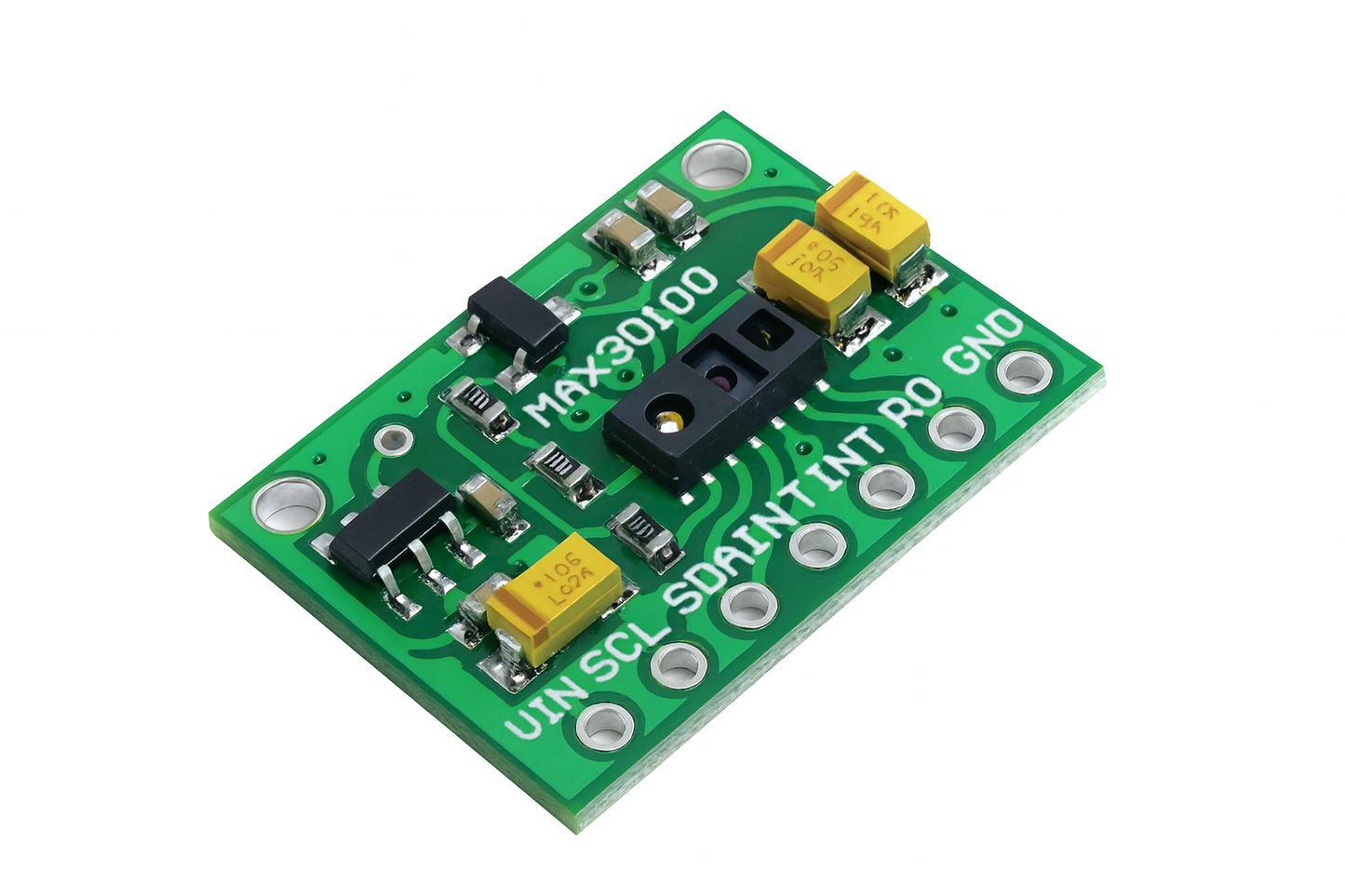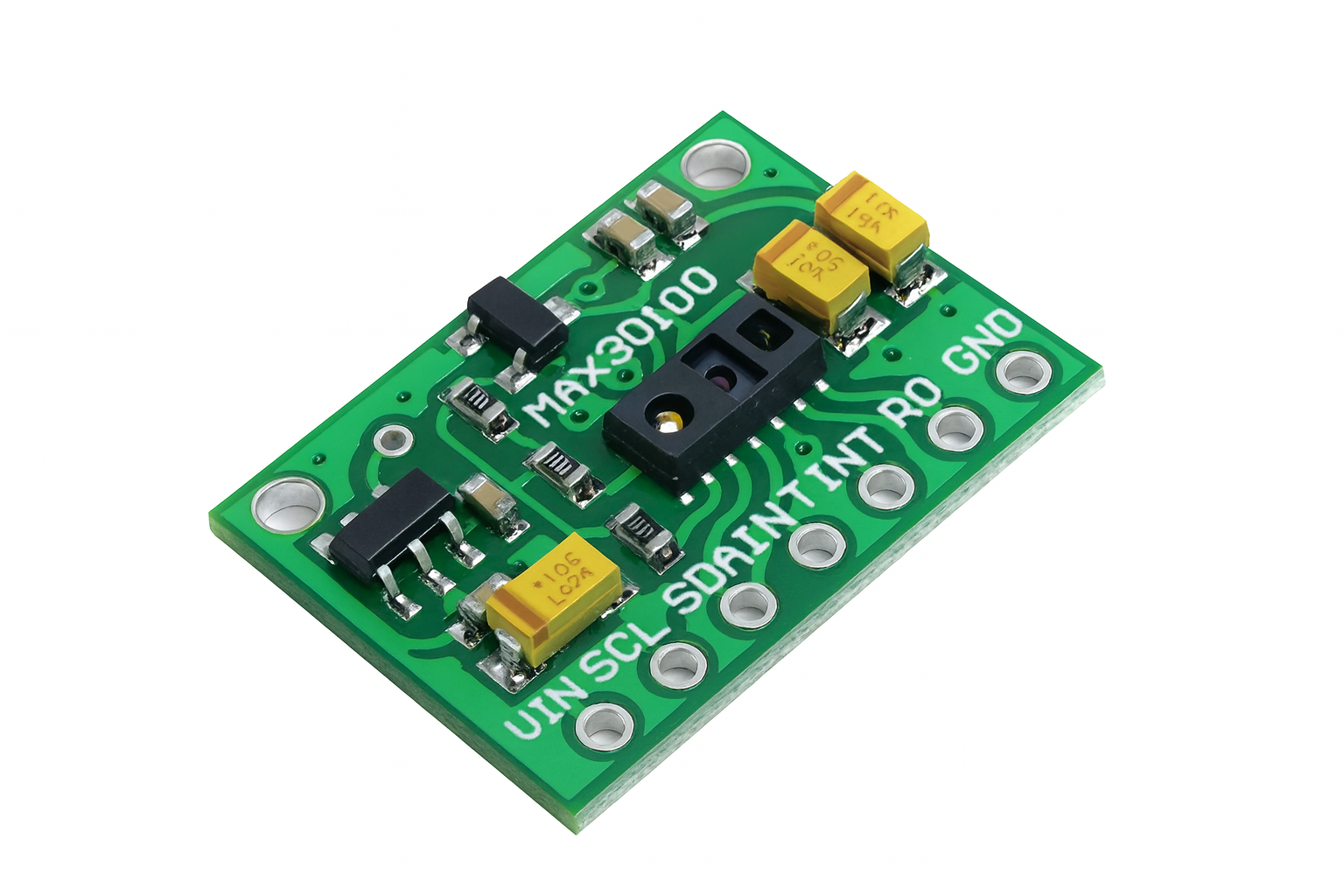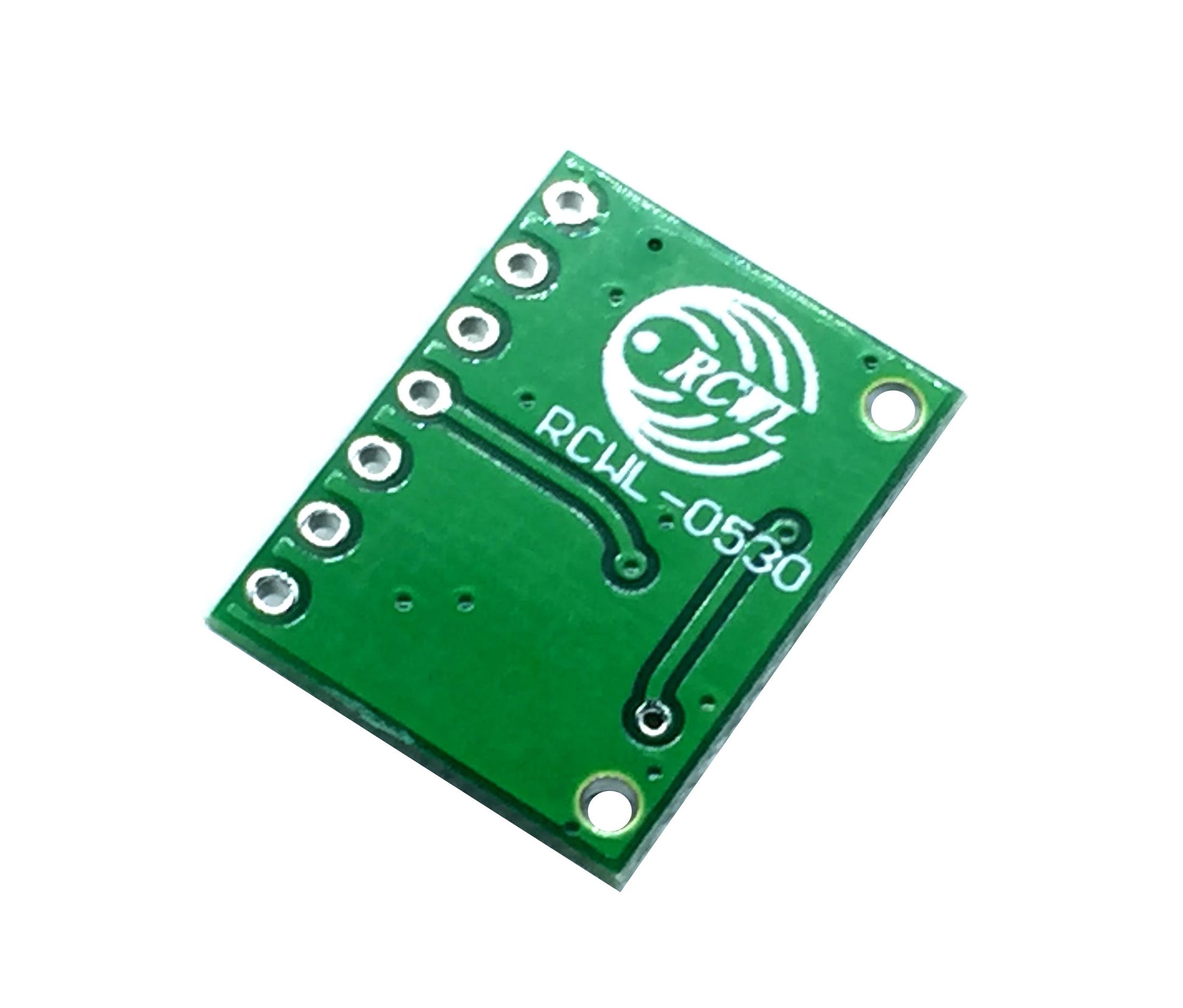The MAX30100 is a compact sensor module that measures both heart rate and blood oxygen saturation (SpO₂). Using integrated red and infrared LEDs along with a photodetector, it detects changes in light absorption caused by blood flow in tissues, making it ideal for health monitoring applications.
Key Features:
- Measures Heart Rate (30–200 BPM) and SpO₂ (70–100%)
- Ultra-low power consumption — only 600μA in measurement mode, 0.7μA in standby
- High sample rate for fast, real-time data output
- Integrated ambient light cancellation for improved accuracy
- On-chip temperature sensor (±1°C)
- Compact and suitable for wearable devices like smartwatches and fitness trackers
Specifications:
- Operating Voltage: 1.8V–5.5V
- Current Consumption: ~20mA during operation
- Interface: I²C
- Temperature Range: -40°C to +85°C
- ADC Resolution: 14-bit
- LED Drive Current: Up to 50mA
- IR LED Wavelength: 870–900nm
- Red LED Wavelength: 650–670nm
Applications:
- Wearable fitness trackers
- Medical monitoring devices
- Fitness assistant gadgets
Usage Tip: For accurate readings, place the sensor on a finger, earlobe, or similar area with good blood flow, and minimize movement during measurement.
Pulse Oximeter Heart Rate Sensor Module MAX30100
Pulse Oximeter Heart Rate Sensor Module MAX30100
18 in stock
Product Code
SKU:AB409
Regular price
₱ 65.00
Regular price
Sale price
₱ 65.00
Unit price
per
Couldn't load pickup availability




